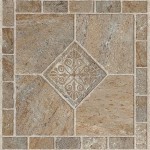How to Heat Tile Floors
Tile floors are a popular choice for homes due to their durability, ease of cleaning, and aesthetic appeal. However, tile can also be cold, especially in colder climates. Heating tile floors can create a more comfortable and inviting living space, particularly during the colder months. There are several methods for heating tile floors, each with its own advantages and disadvantages. This article will explore the most common methods, along with factors to consider when making a decision.
Electric Radiant Heating Systems
Electric radiant heating systems are a popular option for heating tile floors. These systems utilize thin, electric heating cables or mats that are installed beneath the tile. When the system is activated, the cables or mats emit heat that radiates upwards, warming the tile and the surrounding area. Electric radiant heating systems are relatively easy to install and can be used in both new and existing homes.
One advantage of electric radiant heating systems is their energy efficiency. Because the heat is directed directly at the floor, there is less energy loss compared to other heating systems, such as forced air heating. Additionally, electric radiant heating systems can be controlled with thermostats, allowing homeowners to adjust the temperature to their preferences. However, electric radiant heating can be more expensive to install than other heating methods, and the operating costs can vary depending on electricity rates.
Hydronic Radiant Heating Systems
Hydronic radiant heating systems use hot water circulating through pipes embedded beneath the tile to provide heat. The water is heated by a boiler and then pumped through a network of pipes installed in the subfloor. These systems are highly efficient and provide a comfortable, even heat. They are also very quiet, offering a more peaceful environment than forced air heating.
Hydronic radiant heating systems are often considered a premium option, as they typically have a higher initial cost than electric systems. However, the long-term operating costs can be lower due to the use of water instead of electricity. It's important to note that installing a hydronic system can be more complex than installing an electric system, requiring expertise in plumbing and heating.
Underfloor Heating Mats
Underfloor heating mats are a more recent innovation in tile floor heating. These mats are thin and flexible, making them easier to install than traditional electric heating systems. They are often used in smaller areas, such as bathrooms or kitchens. Underfloor heating mats are similar to electric radiant heating cables, but they are pre-wired in a mat format, making installation faster and simpler.
Underfloor heating mats are often more affordable than traditional electric systems and they require less labor for installation. They also have the advantage of being energy efficient and easily controlled with thermostats. However, underfloor heating mats typically cover a smaller area than full electric radiant heating systems, limiting their application to smaller rooms.
Factors to Consider When Choosing a Heating System
Beyond the specific heating methods, there are several factors to consider when deciding how to heat tile floors. The size and configuration of the space, the desired temperature, the budget, and the existing heating system are all key considerations.
The size and configuration of the space will determine the type of heating system that is appropriate. For example, a small bathroom might be suitable for underfloor heating mats, while a larger living room might require a full radiant heating system. The desired temperature will also influence the choice of heating system. Some systems, such as hydronic radiant heating, are designed for a lower temperature, while electric radiant heating systems can provide a higher heat output.
The budget is another important consideration. Electric radiant heating systems are generally more affordable than hydronic systems. However, the operating costs of electric systems are often higher than those of hydronic systems. It's important to consider the overall cost, including both the initial installation and the long-term operating costs.
Finally, the existing heating system should be factored into the decision. If a home already has a hydronic system, it might be more practical to use that system to heat the tile floors instead of installing a separate system. However, if a home has a forced air heating system, installing a radiant heating system could improve the overall efficiency of the home's heating system.
Heating tile floors can significantly improve the comfort and appeal of a home. By understanding the different methods of heating tile floors and considering key factors such as budget, size, and efficiency, homeowners can make informed choices about the best heating system for their needs.

Heated Tile Floor On Slab Rogue Engineer

Heated Floors Matt Clark Tile

How To Choose The Best Tile For Heated Floors Oasis

Installing Underfloor Heating Under Tiles Living Heat

How To Install A Heated Tile Floor And Also Not The Creek Line House

Expanding Business Through Radiant Heat Proline

Underfloor Heating For Tiles Under Tile Warmup

I Want A Heated Bathroom Floor What Do Need To Know

Heated Floors Provide Extra Warmth And Comfort In A Home

5 Things To Know About Electrical Radiant Heat Mountainwood Homes








